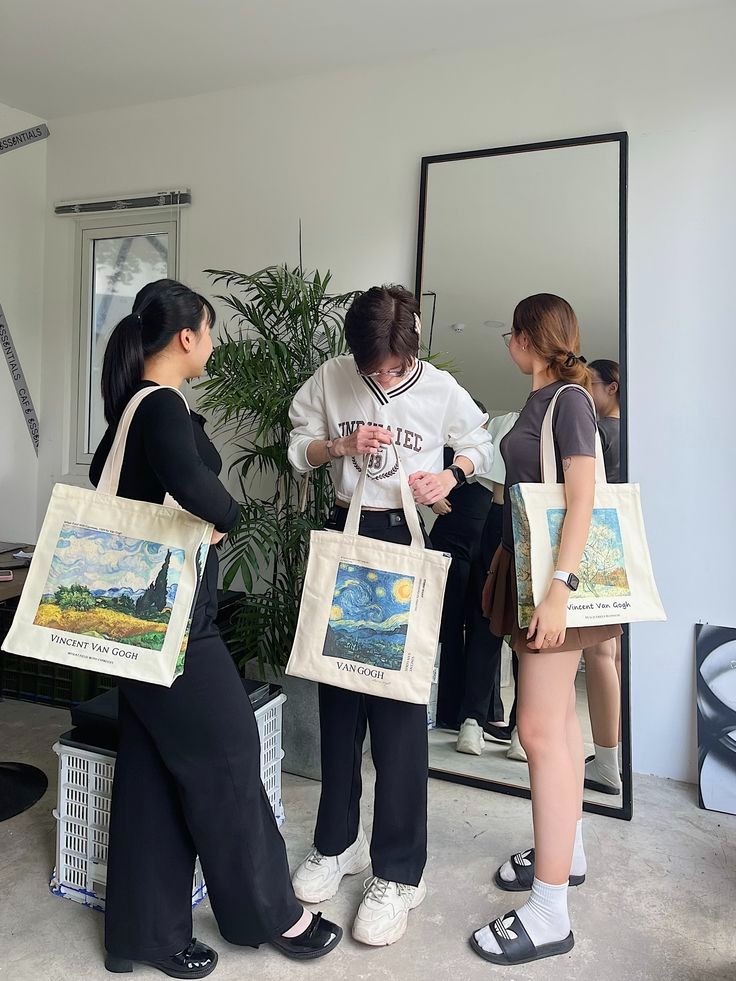The tote bag is far more than a simple accessory—it has evolved into a symbol of practicality, eco-consciousness, and contemporary fashion. Once regarded solely as a utilitarian bag for carrying books or groceries, the tote bag has undergone a transformation into a coveted item that bridges the gap between style and functionality. In this article, we will explore the fascinating history of the tote bag, its evolution in design, its cultural and economic impact, the sustainability movement surrounding it, and its role as a canvas for self-expression. Spanning approximately 2000 words, this comprehensive exploration delves into why the tote bag remains an enduring staple in wardrobes and lifestyles around the globe.
The Origins of the Tote Bag
The term “tote” means “to carry,” which perfectly encapsulates the original purpose of the tote bag. Emerging in the early 20th century, these bags were initially designed for practicality. They were used predominantly by homemakers, students, and laborers who needed a sturdy, spacious bag to transport daily necessities. Early tote bags were made from canvas, a material that was not only durable but also affordable, making it accessible to a wide range of people.
As urbanization increased and lifestyles became more fast-paced, the demand for practical yet stylish carry-alls grew. Tote bags, with their simple design and robust construction, quickly became an essential accessory for city dwellers. The bag’s simplicity was its strength, allowing it to adapt to various uses without compromising on durability or functionality.
Evolution in Design and Functionality
Over the decades, the tote bag has evolved significantly. Designers have taken the basic concept of a simple canvas bag and transformed it into a versatile accessory that caters to various tastes and purposes. Today’s tote bags come in an array of materials, colors, sizes, and styles—from minimalist designs to those adorned with intricate prints and embellishments.
One major evolution in tote bag design is the incorporation of compartments and pockets. Modern tote bags are no longer just plain, single-compartment bags; they now feature multiple pockets, zippered compartments, and even padded sections for laptops and tablets. This added functionality has allowed the tote bag to seamlessly transition from a casual accessory to a professional, everyday carry-all, suitable for work, travel, or leisure.
The strap design has also seen significant innovation. Adjustable and padded straps enhance comfort, making it easier for individuals to carry heavy loads without straining their shoulders. Some designers have even introduced convertible tote bags that can be worn as backpacks, further expanding their usability. This adaptability is a key reason why tote bags have remained relevant in a rapidly changing world.
Tote Bags as a Fashion Statement
While the tote bag’s functionality is undeniable, its role in the fashion world is equally important. Today, the tote bag is a canvas for creative expression, with designers and artists using it to showcase unique prints, logos, and messages. High-end fashion houses and independent labels alike have embraced the tote bag, infusing it with elements of luxury and sophistication. Limited-edition tote bags, often created in collaboration with artists or influencers, have become highly sought-after items, symbolizing both style and exclusivity.
The rise of the tote bag in popular culture can be attributed in part to its appearance on runways and in fashion editorials. The bag’s minimalist design offers an ideal backdrop for vibrant prints and bold graphics, making it a favorite among designers who want to make a statement. Moreover, the tote bag’s large surface area provides ample space for custom designs, ensuring that no two bags are ever exactly alike. This individuality has cemented the tote bag’s status as a personalized accessory that can reflect the wearer’s personality and taste.
The Tote Bag and the Sustainability Movement
In recent years, sustainability has become a central concern in the fashion industry, and the tote bag has emerged as a champion of eco-friendly practices. The very origins of the tote bag, with its durable canvas construction, make it an ideal alternative to single-use plastic bags. As environmental awareness grows, more consumers are opting for reusable bags to reduce waste and minimize their carbon footprint.
Many brands have leveraged this environmental appeal by marketing tote bags as part of a larger commitment to sustainability. Eco-friendly materials such as organic cotton, recycled polyester, and even hemp have been incorporated into tote bag production. Some companies go further by using innovative techniques like water-based inks and eco-conscious manufacturing processes to reduce environmental impact.
The tote bag has also become a powerful tool for environmental activism. Many non-profit organizations and social enterprises distribute tote bags with messages advocating for environmental protection, recycling, and sustainability. In this way, the bag not only serves a practical purpose but also acts as a portable billboard for important causes, reminding us of our shared responsibility to care for the planet.
Cultural Impact and Social Significance
Beyond its functional and environmental merits, the tote bag has a rich cultural and social significance. It has transcended the boundaries of age, gender, and socioeconomic status, emerging as a universal accessory that speaks to the values of modern society. In the realm of art and activism, the tote bag is a medium for storytelling and expression. Artists have used tote bags to explore themes ranging from political commentary to personal identity, making each bag a unique piece of wearable art.
The democratization of design has allowed everyday individuals to personalize their tote bags. Customization options, such as digital printing and embroidery, enable consumers to add their own touches, whether it’s a favorite quote, a meaningful symbol, or a custom artwork. This level of personalization has fostered a sense of community among tote bag enthusiasts, who share ideas and designs on social media platforms. Hashtag campaigns and online challenges centered around tote bag customization have further solidified the bag’s place in contemporary culture.
In addition to its artistic appeal, the tote bag has become a staple in professional settings. Its clean, uncluttered look is well-suited for the modern workplace, where functionality and style are equally valued. The bag’s ability to carry laptops, documents, and personal items makes it an indispensable accessory for professionals on the go. As a result, the tote bag has successfully bridged the gap between casual and formal settings, highlighting its versatility as a cultural icon.
The Business and Economic Impact of Tote Bags
The global market for tote bags is a multi-billion-dollar industry that spans across fashion, retail, and corporate sectors. From mass-produced items available in supermarkets to exclusive designer collaborations, the tote bag market caters to a wide range of consumers. Its affordability and versatility make it an attractive product for both consumers and businesses alike.
For retailers, tote bags offer a valuable opportunity for brand promotion and customer engagement. Custom tote bags featuring company logos, slogans, or unique designs are frequently used as marketing tools or promotional giveaways. Not only do they serve as a functional accessory, but they also increase brand visibility and foster customer loyalty. Many companies have found that gifting a stylish tote bag can significantly boost their brand image and generate positive word-of-mouth.
Furthermore, the rise of online shopping and e-commerce has contributed to the popularity of tote bags. With increasing concerns over packaging waste, many e-commerce platforms encourage customers to opt for reusable tote bags for deliveries or to use as shopping bags during in-store visits. This shift towards sustainability in packaging aligns with broader consumer trends favoring eco-friendly practices, further cementing the tote bag’s role in modern commerce.
Innovations in Tote Bag Manufacturing
Advancements in technology have significantly influenced the manufacturing of tote bags. Modern production techniques allow for greater precision, customization, and quality control. Digital printing has revolutionized the way designs are applied to the bag’s surface, offering high-definition images and vibrant colors that can withstand repeated use and washing. This technology has opened the door for small businesses and independent designers to create limited-edition collections without the need for large-scale production.
In addition to digital printing, new sewing techniques and materials have improved the durability and functionality of tote bags. Reinforced stitching, high-quality zippers, and ergonomic designs contribute to a bag that is not only aesthetically pleasing but also built to last. These innovations are particularly important in a market that values longevity and sustainability over disposable fashion.
Some manufacturers have also embraced automation and smart technology in the production process. Automated cutting and stitching machines streamline production, reducing waste and ensuring consistent quality. In some cases, manufacturers are even experimenting with smart textiles that can interact with smartphones or other devices, hinting at a future where the tote bag could become a part of the digital ecosystem.
Tote Bags and Digital Culture
The digital age has transformed the way we perceive and interact with fashion, and the tote bag is no exception. Social media platforms like Instagram, Pinterest, and TikTok have provided designers and consumers with new avenues to showcase and celebrate their tote bags. Influencers often feature their favorite tote bags in curated lifestyle posts, sharing tips on how to style and accessorize them for various occasions.
Online communities have flourished around the shared love for tote bags. Enthusiasts discuss trends, exchange customization ideas, and even participate in collaborative design projects through social media groups and forums. The hashtag culture has given rise to viral challenges and campaigns that celebrate the tote bag as both a fashion accessory and a symbol of environmental responsibility. This digital engagement not only boosts the popularity of tote bags but also reinforces their status as a modern icon that resonates with a tech-savvy, eco-conscious audience.
The Intersection of Art and Commerce
The tote bag represents a perfect intersection of art and commerce. Its broad appeal lies in its ability to serve as both a functional item and a medium for artistic expression. Many artists have found inspiration in the tote bag’s blank canvas, creating limited-edition designs that reflect contemporary issues, pop culture references, or abstract aesthetics. These collaborations between artists and brands have led to the creation of highly coveted pieces that are celebrated both for their design and their cultural significance.
Retailers, in turn, have capitalized on this trend by hosting design contests, pop-up events, and exclusive collaborations. Such initiatives not only enhance consumer engagement but also drive sales by offering unique products that cannot be found elsewhere. The blend of art and commerce in the tote bag market highlights the evolving nature of consumer goods—where the story behind the product is just as important as its functionality.
Challenges and Future Prospects
Despite its popularity, the tote bag market is not without challenges. The fast fashion industry’s emphasis on mass production can sometimes lead to quality concerns and environmental issues. As consumers become more discerning and eco-conscious, there is increasing pressure on manufacturers and retailers to adopt sustainable practices. Addressing these challenges requires innovation, transparency, and a commitment to ethical production methods.
Looking ahead, the future of the tote bag appears bright. With ongoing advancements in sustainable materials and manufacturing techniques, the tote bag is poised to become even more eco-friendly and durable. The integration of smart technology may also lead to the development of “intelligent” tote bags that offer additional functionalities, such as integrated charging ports or tracking capabilities. These innovations could further cement the tote bag’s role as a must-have accessory in the digital age.
Moreover, the customization trend is likely to continue driving the tote bag market forward. Consumers are increasingly looking for products that reflect their personal style and values. As a result, brands will continue to invest in technologies that allow for bespoke designs and personalized touches. Whether through limited-edition collaborations or on-demand printing, the ability to create a unique tote bag is becoming a key selling point in an increasingly competitive market.
Conclusion
The tote bag is a remarkable example of how a simple, utilitarian object can evolve into a cultural and fashion icon. Its journey from a basic carry-all to a symbol of style, sustainability, and self-expression is a testament to the dynamic nature of consumer trends and technological innovation. Today, the tote bag serves a myriad of purposes—it is a practical accessory for daily use, a canvas for artistic creativity, and a statement of eco-conscious living.
From its early days as an indispensable tool for carrying everyday essentials, the tote bag has grown into a multifaceted product that reflects the values and aspirations of modern society. Its versatility, affordability, and potential for customization have made it a beloved accessory among diverse demographics. As we continue to navigate an era of rapid change, the tote bag stands as a reminder that simplicity, when paired with thoughtful design and innovation, can create a timeless piece that transcends trends.
In a world increasingly focused on sustainability and ethical consumption, the tote bag embodies the spirit of responsible fashion. It invites us to reconsider our relationship with the products we use daily and encourages us to choose items that are both functional and environmentally friendly. As designers, manufacturers, and consumers come together to redefine what it means to be stylish and sustainable, the future of the tote bag looks promising—filled with endless possibilities for innovation and personal expression.
Ultimately, the tote bag is more than just an accessory; it is a reflection of our evolving culture and a testament to the power of creativity. Whether you’re carrying groceries, heading to work, or making a fashion statement on the streets, the tote bag is there to remind you that style and practicality can coexist harmoniously. As we look to the future, one thing is clear: the tote bag will continue to inspire, adapt, and evolve, remaining an integral part of our everyday lives and a symbol of the values we hold dear.



